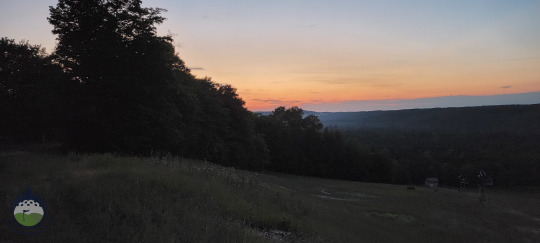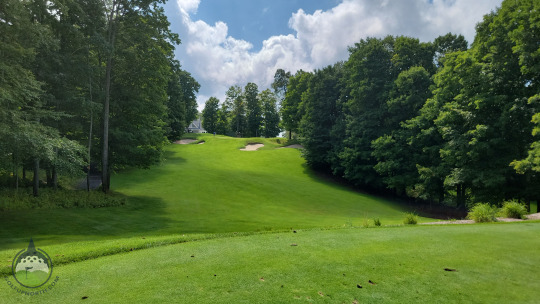#shotones
Explore tagged Tumblr posts
Text
The City of Sunlight 日光之城 (Rìguāng Zhī Chéng) : Tibetan Culture Infographics
If I am to rec an underrated Cdrama for 2024 it'd be this show because:
1. Tibetan setting
2. Tibetan actors
3. Fully subbed on YT 😁
In contrary to the much more popular My Altay earlier this year (the 12 ep show about the lifestyle of Chinese Kazakhs, a lot of actors being Uyghur) which was so mesmerizingly nature vlog-style, this show is more daily life interactions so there's lots of characters and details to pay attention to. I really like that these two shows let the actors of those ethnicities shine.

The City of Sunlight weibo posted some infographics about Tibetan cultural details featured in the show, I'll post the original images together with their google-translated images and then links for where you can read up more about the said topics if interested.
Must-go Travel Locations When in Tibet!
Potala Palace , Barkhor Street , Nanshan Park , Princess Wencheng Live Theatre , Zongjiao Lukang Park , Tibet Museum , Norbulingka
Must-try Tibetan Delicacies: Butter tea, Tsampa Porridge, Tibetan Yak Beef Hotpot, Meat Pie, Tibetan Meat buns


Shoton Festival


Tibetan Opera


Gangba Sheep


Guozhuang Dance


The Myth of King Gesar


Butter Tea


And lastly, have these 9 gorgeous character posters with the theme of Tibetan tapestries coming to life.









.
More Posts by Me
#The City of Sunlight#cdrama#chinese drama#日光之城#Rìguāng Zhī Chéng#tibetan culture#Epic of King Gesar#Butter Tea#Gangba Sheep#Guozhuang Dance#Tibetan Opera#Shoton Festival#Tibetan cuisine#tibetan food
4 notes
·
View notes
Text

The first official appearance of Shoton no Reisa! Feel free to interact and ask questions about her! She likes meeting new people, and is eagerly waiting by the ask box.
(She is My OC, and I drew her myself. I spent quite a while trying to get the shape of her hair right, and I feel pretty proud of her, but know I have plenty of room to improve! Please do not steal my art.)
#shoton no reisa#shoton#naruto oc#oc#oc rp#oc rp blog#naruto#naruto rp#naruto rp blog#naruto blog#ask away!#oc art#oc artwork
0 notes
Text
Tibet : un rituel ancien déployé au début du Festival du Shoton de Lhassa
Le Shoton est l’une des fêtes traditionnelles les plus importantes de Lhassa, au Tibet. Elle est également connue sous le nom de Festival du yaourt, car, en tibétain, « Sho » signifie yaourt et « Ton » veut dire banquet. L’événement dure généralement sept jours et les activités comprennent des spectacles artistiques, des opéras tibétains, des courses de chevaux, des compétitions d’échecs…

View On WordPress
#Chine#chine-magazine#culture chinoise#fete traditionnelle chine#rituel traditionnel chinois#shoton#Tibet
0 notes
Photo

Wonka Group Shot
One of a series of Wonka-inspired YCHs I completed, featuring folks taking a trip through Stephanie's non-canon kink-adjacent candy factory! The day's come to a close, and a day like this needs a photo souvenir! Everyone squeezes into the frame, though with all our disparate sizes and shapes, framing is a bit of a challenge. Worth it, though! Full-size image and .sai2 project file are up on Patreon: https://www.patreon.com/posts/92418848
11 notes
·
View notes
Photo

This Day in History: Lincoln Shot
On this day in 1865, Abraham Lincoln is shot by an assassin. Did you know that Lincoln was shot on Good Friday? April 14 also happened to be Good Friday that year.
Unfortunately, as we all know, Lincoln would pass away the next day.
The President had decided to spend his Friday evening at a comedy at Ford’s Theatre in Washington, D.C. It had been only 5 days since General Robert E. Lee surrendered to General Ulysses S. Grant, effectively bringing the Civil War to a close. As the President watched the show from his box, an assassin burst through the door and shot Lincoln in the back of the head. The assassin, John Wilkes Booth, then dropped his pistol and began waving a dagger in the air.
The story continues here: https://www.taraross.com/post/tdih-lincoln-shot
#tdih#otd#this day in history#history#history blog#civil war#abraham lincoln#potus#presidential history#sharethehistory
12 notes
·
View notes
Text
Central Tibet Tour: A Journey Through the Heart of the Roof of the World
Tibet, often referred to as the "Roof of the World," is an extraordinary travel destination filled with breathtaking landscapes, ancient monasteries, and rich cultural heritage. Among the different regions of Tibet, Central Tibet stands out as the historical, spiritual, and cultural nucleus. A Central Tibet tour offers travelers an unforgettable experience, blending sacred Buddhist sites, awe-inspiring natural beauty, and deep-rooted traditions.

Why Choose a Central Tibet Tour?
A tour of Central Tibet is ideal for those who want to explore the very essence of Tibetan culture and history. This region encompasses the capital city, Lhasa, along with significant historical and spiritual sites such as Shigatse and Gyantse. From the majestic Potala Palace to the serene Yamdrok Lake, Central Tibet offers a diverse range of attractions that cater to both adventure seekers and spiritual travelers.
Key Highlights of a Central Tibet Tour
1. Lhasa – The Spiritual and Cultural Hub
Lhasa, the capital city of Tibet, is the first stop on most Central Tibet tours. It is home to some of the most iconic landmarks in Tibetan Buddhism.
Potala Palace: The former winter residence of the Dalai Lama, this UNESCO World Heritage site is a stunning architectural masterpiece that overlooks the city. The palace houses numerous chapels, murals, and sacred relics.
Jokhang Temple: Considered the holiest temple in Tibet, Jokhang Temple attracts thousands of pilgrims who prostrate themselves in devotion. It houses a revered statue of Jowo Rinpoche, a sacred image of Buddha.
Barkhor Street: A lively marketplace where you can immerse yourself in Tibetan culture, shop for traditional handicrafts, and observe pilgrims walking the kora (circumambulation path) around Jokhang Temple.
2. Shigatse – The Seat of the Panchen Lama
Located about 270 km west of Lhasa, Shigatse is Tibet’s second-largest city and an essential stop on a Central Tibet tour.
Tashilhunpo Monastery: The traditional seat of the Panchen Lama, this monastery features a massive Maitreya Buddha statue and beautifully decorated prayer halls.
Shigatse Dzong: This ancient fortress offers panoramic views of the city and its surrounding landscape.
Local Markets: Experience the vibrant markets where you can find Tibetan carpets, yak butter, and traditional medicinal herbs.
3. Gyantse – A Town of Timeless Charm
Gyantse, a picturesque town en route to Shigatse, offers a glimpse into Tibet’s medieval past.
Pelkor Chode Monastery and Kumbum Stupa: This monastery is famous for its multi-tiered Kumbum Stupa, a magnificent structure containing thousands of Buddhist murals and statues.
Gyantse Dzong: A historic fortress that played a crucial role in Tibet’s defense during the British invasion in 1904.
4. Yamdrok Lake – A Heavenly Sight
One of Tibet’s three sacred lakes, Yamdrok Lake, is a mesmerizing body of turquoise water surrounded by snow-capped mountains. It is believed that the lake holds spiritual significance and is a source of positive energy for Tibetans.
Best Time to Visit Central Tibet
The ideal time to embark on a Central Tibet tour is between April and October, when the weather is pleasant, and the skies are clear. This period also coincides with various Tibetan festivals such as Saga Dawa (celebrating Buddha’s birth, enlightenment, and passing) and Shoton Festival (the famous yogurt festival held in Lhasa).
How to Prepare for a Central Tibet Tour
Travel Permits: A Tibet Travel Permit is required to enter Tibet, which can only be arranged through an authorized travel agency.
Acclimatization: Due to Tibet’s high altitude, it’s crucial to acclimate properly to avoid altitude sickness. Spending a few days in Lhasa before traveling to higher regions is recommended.
Packing Essentials: Warm clothing, comfortable walking shoes, sunglasses, sunscreen, and a good quality camera to capture the stunning landscapes.
Experience Tibetan Culture and Cuisine
A Central Tibet tour is incomplete without indulging in the local culture and cuisine.
Tibetan Butter Tea: A salty tea made with yak butter, a staple in Tibetan households.
Tsampa: Roasted barley flour mixed with butter tea, often eaten by Tibetan nomads.
Momos: Tibetan dumplings filled with meat or vegetables, a must-try delicacy.
Traditional Festivals: If you’re lucky to visit during a festival, you can witness mesmerizing Tibetan opera performances, religious dances, and traditional music.
Why Central Tibet Should Be on Your Travel Bucket List
A tour of Central Tibet is more than just a vacation; it is an enlightening journey into a land of spiritual wisdom, breathtaking landscapes, and a unique way of life. Whether you’re exploring the grandeur of the Potala Palace, admiring the tranquil beauty of Yamdrok Lake, or interacting with friendly Tibetan locals, Central Tibet promises a travel experience like no other.
By embarking on a Central Tibet tour, you not only witness the beauty of this sacred land but also gain a deeper understanding of Tibetan Buddhism and culture. If you’re looking for an adventure that combines history, spirituality, and nature, Central Tibet should undoubtedly be on your travel bucket list.
0 notes
Text
Tibetan opera originated in the Tubo period and has a history of more than 600 years. Tibetan opera is a national intangible cultural heritage of Tibet and is known as the "living fossil" of Tibetan culture. Every year during the Shoton Festival, the Tibetan opera troupe will perform for dozens of hours without curtains, lighting or props. The masks of the characters in Tibetan opera have the same color and shape, representing different lives.
1 note
·
View note
Text

Reframing Street Photography Through Reflections
|
Shoton - @samsungwithgalaxy
|
#reflection_shotz #reflectionphotography #reflectionshots #reflectiongram #streetphotographycommunity #streetphotograph #streetphotographyjournal #ig_calcutta #indiaclick #thestreetphotographyhub #photographers_of_india #streetphotographyinternational #streetphotographykolkata #streetphotographyindia #streetphotographyawards #streetphotographermagazine
0 notes
Text
When Is the Best Time to Visit the Lhasa Tour?
Embarking on a Tibet Lhasa tour is a dream for many travelers, drawn by the allure of its spiritual heritage, stunning landscapes, and unique culture. However, timing your visit can significantly impact your experience. This guide will help you determine the best time to travel to Tibet Lhasa, considering weather conditions, cultural events, and tourist influx.

Understanding the Climate in Lhasa
Lhasa, the capital of Tibet, sits at an altitude of about 3,656 meters (12,000 feet). Its high elevation results in a unique climate, characterized by four distinct seasons. Understanding these seasonal variations is crucial for planning your Tibet Lhasa tour.
Spring (March to May)
Spring is one of the best times to travel to Tibet Lhasa. The weather during this period is mild, with temperatures ranging from 5°C to 15°C (41°F to 59°F). The snow starts melting, revealing lush landscapes and vibrant flora. It's a great time for sightseeing as the skies are clear, and the air is fresh.
Key Highlights:
Ideal for photography with blooming flowers and clear skies.
Fewer tourists compared to peak seasons, offering a more serene experience.
Important festivals like the Butter Lamp Festival fall in this period, providing a glimpse into Tibetan culture.
Summer (June to August)
Summer is the peak tourist season for a Tibet Lhasa tour. The weather is warm, with temperatures ranging from 10°C to 25°C (50°F to 77°F). While the region experiences some rainfall, it’s typically light and doesn’t hinder travel plans significantly.
Key Highlights:
Perfect for trekking and outdoor activities.
Long daylight hours allow for extensive exploration.
Major festivals like the Shoton Festival occur, featuring traditional Tibetan opera and yak races.
Autumn (September to October)
Autumn is another excellent time to visit Lhasa. The weather is stable, with temperatures ranging from 5°C to 20°C (41°F to 68°F). The rainfall diminishes, and the skies are often clear, providing spectacular views of the surrounding mountains.
Key Highlights:
Crisp, clear air makes for breathtaking views and excellent photography.
Harvest season offers a unique cultural insight as locals celebrate with various traditional activities.
Comfortable weather conditions for visiting monasteries and other landmarks.
Winter (November to February)
Winter is the off-season for travel to Tibet Lhasa due to the cold weather, with temperatures often dropping below freezing. However, it can still be a rewarding time to visit for those who are well-prepared.
Key Highlights:
Significantly fewer tourists, leading to a more personal and tranquil experience.
Lower prices for accommodations and tours.
The opportunity to witness the unique sight of snow-covered landscapes and sacred sites.
Cultural Festivals and Events
Timing your Tibet Lhasa tour to coincide with local festivals can enhance your travel experience. Tibet is rich in cultural heritage, and its festivals are vibrant, spiritual, and deeply rooted in tradition.
Tibetan New Year (Losar)
Losar, the Tibetan New Year, usually falls in February or March. It’s the most important festival in Tibet, marked by elaborate rituals, dances, and family gatherings. Visiting during Losar offers a deep dive into Tibetan culture and traditions.
Saga Dawa Festival
Saga Dawa, celebrated in May or June, commemorates the birth, enlightenment, and death of Buddha. Pilgrims flock to Lhasa to perform rituals and circumambulate holy sites. This festival provides a unique opportunity to witness the spiritual fervor of Tibetan Buddhism.
Shoton Festival
The Shoton Festival, also known as the Yogurt Festival, takes place in August. It’s one of the most popular festivals in Tibet, featuring Tibetan opera performances and yak races. The highlight is the unveiling of a giant Thangka (Buddhist painting) at Drepung Monastery.
Considerations for a Tibet Lhasa Tour
When planning your Tibet Lhasa tour, consider the following factors to ensure a smooth and enjoyable trip.
Altitude Sickness
Lhasa’s high altitude can cause altitude sickness, especially for those unaccustomed to such elevations. It’s crucial to acclimate properly by resting upon arrival and staying hydrated. Spring and autumn, with their milder weather, are ideal for minimizing the risk of altitude sickness.

Travel Permits
Travel to Tibet Lhasa requires several permits, including the Tibet Travel Permit. Ensure all necessary documents are in order well in advance. It’s advisable to work with a reputable travel agency to handle the permit process smoothly.
Tourist Influx
Summer is the busiest time, with an influx of tourists. If you prefer a quieter experience, consider visiting in spring or autumn. Winter offers the most solitude but comes with harsh weather conditions.
Practical Tips for Your Tibet Lhasa Tour
To make the most of your Tibet Lhasa tour, keep these practical tips in mind.
Packing Essentials
Pack appropriately for the weather. Regardless of the season, bring layers to adjust to temperature fluctuations. Don’t forget essentials like sunscreen, sunglasses, a hat, and lip balm, as the high altitude can intensify sun exposure.
Health Precautions
Consult your doctor before traveling to high altitudes, especially if you have pre-existing health conditions. Carry necessary medications, including those for altitude sickness. Staying hydrated and avoiding strenuous activities in the first few days can help with acclimatization.
Cultural Sensitivity
Respect local customs and traditions. Tibetans are deeply religious, and their customs may be unfamiliar to you. Be mindful of photography restrictions, particularly in monasteries and during religious ceremonies. Learning a few basic phrases in Tibetan can go a long way in showing respect.
Conclusion
Choosing the best time for your Tibet Lhasa tour depends on your preferences and priorities. Each season offers a unique experience, from the lush beauty of spring to the cultural richness of summer and the serene tranquility of winter. By considering the weather, cultural events, and your personal preferences, you can plan a trip that maximizes your enjoyment and minimizes challenges. Whether you seek spiritual enlightenment, breathtaking landscapes, or cultural immersion, Lhasa awaits with its timeless charm and profound mystique.
0 notes
Text
Budget Tibet Tour: Explore and Enjoy the Tibetan Festivals
Tibet is a country rich in cultural diversity and lively customs. Its historical and spiritual legacy is honored via a wide range of colorful festivals. Budget Tibet Tour provides an exceptional chance for visitors to take part in these celebrations without breaking the bank for those looking for a comprehensive immersion experience into the core of Tibetan culture.

Losar Festival: A Happy Commencement
Travelers may experience the splendor of Losar, the Tibetan New Year, without breaking the bank with the help of Budget Tibet Tour China. Participants may immerse themselves in the jubilant celebrations that celebrate the start of a new lunar year, which include intricate ceremonies and traditional dance performances.
Saga Dawa: Honoring the Enlightenment of the Buddha
Discover the holiness of Saga Dawa, the festival honoring the Buddha's conception, realization, and demise. Spending Plan Tibet Tour designs itineraries that let visitors experience this spiritually significant festival's butter lamp burning, circumambulate holy locations, and engage in altruistic endeavors.
Shoton Festival: Lhasa's Festivity and Opera
A highlight of the cultural calendar is the Shoton Festival, which is well-known for its colorful Tibetan opera performances and the presentation of enormous thangkas. Affordably priced packages from Budget Tibet Tour include front-row seats to the opera performances and chances to mingle with locals during this exciting festival. You must choose the Best Time To Travel Tibet.
Unveiling Ganden Thangka: A Visual Extravaganza
Discover the exquisite craftsmanship of Tibetan thangkas at the Ganden Thangka Unveiling event. Art enthusiasts may see the unveiling rituals and learn about the cultural importance of these intricate religious paintings with the help of the Budget Tibet Tour.

Travelers are invited to immerse themselves in the rich tapestry of Tibetan festivals in addition to exploring Tibet's captivating scenery with Budget Tibet Tour China. Budget Tibet Tour guarantees that visitors may experience the cultural richness of Tibet without having to worry about going over budget by carefully selecting reasonably priced itineraries that encapsulate each festival. Set off on a tour with the Cheap Tibet Tour to see the amazing and cost-effective spectacle of the Tibetan festivals unfolding.
1 note
·
View note
Text
About Reisa
Reisa was born blind, but "sees" much like Toph Beifong from ATLA, using vibrations; she further enhances her sensing by using chakra.
She has the Crystal Release Kekkei Genkai, and is incredibly skilled when using it. Her most frequent use of her power, however, is usually making jewelry or small trinkets, making her better at fine control and details rather than large flashy attacks.
Generally kind, and not overly ambitious, Reisa is rather sweet spirited. She does have a penchant for harmless pranks, though. She enjoys spending time with others just as much as she can appreciate solitude.
If anyone has any questions feel free to ask! Reisa is a new character so she is still in development, but many things are already set. If you want to RP with Reisa, please send a PM or indicate that your ask is an RP dialogue prompt.
#shoton no reisa#shoton#crystal release#kekkei genkai#Naruto#naruto rp#naruto blog#naruto shippuden#oc rp#fresh oc right out the noggin#ask friendly#pm friendly
1 note
·
View note
Text
September 1, 2022 Newsletter

We finally made it to Treetops!
We have been so busy this summer with family and friends that golf trips we talked about did not happen. I have never been to Treetops in Gaylord; I had heard wonderful things from the guys who have had a few golf trips there. It was time for me to see what the fuss was about.

We booked a weekend with 1 round on Saturday and 1 on Sunday before we headed home. Since we were going to be getting in later on Friday than was ideal for us, we did not want Saturday too full. Saturday’s course was The Signature, and we will talk about that in a future issue.
Sunday’s course was the one I was excited to try and will tell you about in this newsletter. We played the Threetops which is a 9-hole, par 3 course with a lot of history.
I also bought a new set of clubs and have only played a few rounds with them. I am still adjusting to the lighter weight and a ½ inch shorter shaft. Played the previous weekend and thought I had figured out the adjustments I needed to make. This trip told me I still have things to work on.
History of Treetops
Threetops was designed by Rick Smith and was opened in conjunction with the Fazio-designed Premier course in 1992. Soon after opening it became the number-one ranked par-3 course in the U.S. It was a model course for many of the par-3 courses that popped up all over the country. Threetops is also one of the most recognized par-3 courses because of hosting the ESPN Par-3 Shootout for 8 years.

ESPN Par-3 Shootout
In 1999 Threetops became the home to the ESPN Par-3 Shootout. Some of the biggest names in golf have played the Threetops. Names like Jack Nicklaus, Fred Couples, Lee Trevino, Phil Mickelson, and Arnold Palmer to name a few. The last shootout at Threetops was held in 2006 with Couples, Chris DeMarco, Craig Stadler and Andy North back to defend his 2005 win. Fred Couples walked away with that honor and $300K and Andy North ended up in 4th place and only won $20K.
There have been a lot of great shots by some talented players and players who participated in the shootout have collectively won over 50 major championships. There was one swing on July 30, 2001, that is often referred to as “the shot heard ‘round the world” by Lee Trevino

Million Dollar Shot
On the 7th hole from 135 yards Lee Trevino sunk his swing for a hole in one! In addition to the million dollars, Trevino also won $10,000 on that hole for closest to pin. It is said to be the most valuable shot in the history of golf. He followed this play with a much more impressive play by donating $500,000 to St. Jude Children’s Research Hospital.
After Trevino’s ace on Hole 7 a plaque was placed on the spot where he swung his club for the million-dollar shot. Couples and Mickleson jokingly would tap the plaque for good luck before taking their shots. They never got a hole-in-one but started a superstitious tradition. Everyone needs to tap the plaque before teeing off on Hole 7.
Playing Threetops
We were excited to play Threetops, with as many times as my husband has played at Treetops, he never played the par-3 course. He had heard somewhere along the way that it was around $150 for a round and he said he could not justify paying that for 9 holes. We decided regardless of price this time we would play it and live on PBJs for a week if we had to. Happy to say that our menu that week was not affected, 9-hole round was only $45. Funny though because as I sit here writing this newsletter, I am having a crunchy peanut butter and jelly sandwich. 😊
This could be my course!
Looking over the scorecard (we grabbed one the day before) and seeing how many holes were totally within my driving range I was stoked. I just may get a birdie, definitely a few pars. This was going to my course! There are 3 sets of tees back (black), middle (white) and front (red). Longest hole from the reds was hole 3 at 137 yards.
We pull up to the starter and get checked in. My husband’s golf bag is a Michigan bag, so he first showed us some pictures from the teams visit a couple of weeks before. I am chomping at the bit, ready to get out there and kick some butt. The starter than provides us with some helpful tips (actually scared the hell out of me) and said to watch out for hole 3. Good to know. I may be scared but I know I can hit the green with my driver on most of these holes.

If only I could golf like Trevino did!
One of the fun things about this course is that they have given the holes names. As we played each hole, many of the names made sense. One of the hard things about this course is that most of the holes either have elevated tee boxes, elevated greens or both. Trying shoot over valleys can be a challenge. Staying on the cart path and climbing up to, or out of tee boxes and greens did get tiring. Halfway through your legs are feeling it from all the hill climbing.
All the pictures of this course (at least 1 picture for each hole) are posted here.
We get to the first hole called Plateau, and it is only 100 yards to the green, perfect for my driver and since I always hit straight, I may just get a hole-in-one. Of course, I hit right, damn those new clubs! Still did not do horrible considering where I landed and ended up bogeying the hole.

Hole 2 is called Double Cross because there are 2 greens, depending on which green is flagged is which tee box middle and back use. At only 114 yards from the reds another hole that my driver can easily hit the green. I fell short, not a little, but a lot. Not only did I fall short, but I ended up in a little valley that I had to hit out of. Not my finest moment, ended with a double bogey.
Devils Drop
This is the hole that the starter warned us about. With a 150-foot drop from the white tees. For the back (219 yds) and middle (207 yds) tees this was going to challenge the best of them. Fortunately for me I had less of a drop and had a 70-yard advantage over my husband. 137 yards from the reds. I swung my driver hard and saw my ball sailing towards the green, I knew I had hit it well and I would be rewarded. That drop is very deceiving, and I ended up short again. Was getting concerned we were going to see a pattern with my score.
The next few holes were not kind to me. Hole 4 got its name Deception from its hard right dogleg with sand traps lurking at the turn. Hole 5, called Valley Lo is just what it sounds like a hole down in the valley. Hole 6 is called Harry’s Way. I can only assume that someone name Harry decided water and sand was a good thing.

Hole 7 is called High Five
Now we are at hole 7, called High Five. This is the hole that Lee Trevino sank the ace for a million bucks. The tee boxes sit high and the green down below is long and narrower and has some slants that could make this a blow-up hole. From the reds, this was the second longest hole at 130 yards, I was ready for it. I learned a couple of things the last 6 holes and my driver was not necessarily the right club even though the yardage suggest it was. I started driving with my” seven is heaven” wood and having some success with distance and control (remember new clubs).
Tried for some Trevino magic
Well, folks I nailed that ball and hit it solidly on the green with a very doable 2 putt for a par or maybe a 1 putt for a birdie. This was Trevino’s hole, and I was going to at least get par. I was excited. When we got down to the green, my excitement waned a little, looking down hill was deceiving. Highly unlikely I would get a birdie on this hole, but still a chance at a par.
That first putt was just to get it close without ending up rolling off the green. Somehow the stars aligned, and I did exactly what I was trying to do. I putted the hole for a par! To make this even better, my husband's drive ended up off the green in some rough. This was definitely going to be my hole!!! He chipped that damn ball right next to hole. Damn, he ended up with a par as well. Just could not let me have it to myself. LOL!!

Final 2 holes
After the high I was on getting par on 7, I was feeling pretty invincible until I saw hole 8 in person. The hole is called Hang Time . On the scorecard it looks pretty straight forward, but it is not. It is not really a dog leg, but from the red tees at 103 yards I needed my ball to go a little bit right to end up on the green. Otherwise, it was going to be nasty rough or sand. I ended up on the green but not in a spot that was going to prove to be easy to putt from. Another double bogey on this hole.
Hole 9 called Upward Home is just that you have to drive up toward the green over the valley. This was another deceiving hole. The yardage from the reds was only 125, but I could not get close to the green. To me, this was a par 4 hole, although my husband did get par (pure luck 😊). For me, this was my final double bogey. I mentioned this hole to a friend that lives in Gaylord and has played Threetops several times. He agreed that he thought it played more as a par 4 than a 3.

Threetops is a fun course and a must play when you visit Treetops
Overall, I did enjoy the Threetops even if I did have to climb a few mountains and only got 1 par. This course is one of those courses that you need to play a few times. First time out I got the lay of the land and now know what to expect. It was hard deciding what club to use, where to hit, how hard etc. when you are looking down at the green. Most of the holes were difficult to see how the terrain rolled. Now that I have see both sides of the hole, I think my decision making in the tee box would be smarter.
Treetops Weekend
Our weekend was surprisingly very affordable for the two of us. For under $700 we had a decent room for 2 nights with wi-fi and cable. This included breakfast buffets both mornings and 27 holes of golf for each of us. Add in dinner and alcohol and it was a little bit more. Overall, a surprisingly good deal. We will definitely be back to play the other courses and of course Threetops again.
If you get the chance, stop by and at least spend a couple of hours playing Threetops.
Follow us on Social Media
Join the discussion on Golf Up North Facebook Group
Let us know your favorite course, tips or anything golf related! We encourage golf courses to share their news and specials with our group.
You can also like and follow us on Facebook and/or Instagram where we share information on golf courses Up North and what we think are funny or interesting tidbits about golf.
Share Your Favorite Course With Us
We would love to hear about your favorite Course in the Upper Peninsula or Northern Lower Michigan. Send pictures of golfing your favorite course and a couple of sentences about why you love the course. We will share your pictures and recommendations with our readers and on our social media accounts. If you include a mailing address, we will send you some Golf Up North schwag as a thank you!! Send your pictures and comments to [email protected]
Find your Up North Golf Course
If you would like to find your perfect Up North golf course visit Golf Up North and if you are looking for fun things to do after your round visit Up North Entertainment for dining, lodging and things to do Up North.
We hope you enjoyed our latest issue of The Golf Up North Newsletter.
Disclosure: We never tell a course who we are when we book and play a course. We do not ask nor will we accept free rounds to write about a course. We pay full price for our rounds for everyone in our group.
#golfupnorth#golfupnorthnews#wemadeitsimple#northernmichigangolfcourses#treetopsresort#treetopsgolfresort#threetopscourse#thesignaturecourse#themasterpiececourse#thetraditioncourse#thepremiercourse#gaylordgolfmecca#gaylord#golfweekend#golftrip
0 notes
Text

@shotones sent: “I didn’t mean to stab you!” / from lucius, probs having an episode and mistaking theo for some threat? :' ) || Injury

“Calm down, it’s. . .it’s alright - “
The shock still has her hands trembling, the pain one she can just barely tolerate for any longer. The knife is still stuck in her abdomen, blackened hilt petruding out as crimson ichor grows & blossoms to further stain her attire. It’s warm, wet when her hands barely touch the fabric. She’s been wounded by plenty of other things before - demons, werewolves, vampires; but getting stabbed? Well, it was pretty new.
Backside comes to collide against the wall behind her, breaths becoming more shallow as she attempts to swiftly calm herself as well as him. “It’s - shit - we gotta. . . just - we can’t pull it out, the bleeding will get worse.”
14 notes
·
View notes
Text

“ I DON’T FUCKIN’ KNOW ! people die of natural causes ALL THE TIME ! ” true , but disembowelment usually isn’t typically cited as a natural cause . poppy shrugs and then crosses their arms over their chest , like a rebellious teenager facing off with their strict father — ‘ but dad ! i want purple streaks in my hair ! ’ they don’t bother to ask before they conjure a crinkled pack of cigarettes from their jacket and pull one out with their teeth . “ LOOK — ” they flick open a lighter . “ if you want me to confess to something , i will . but what are you gonna do ? throw me in prison ? take away my gameboy privileges ? ”
@shotones : what do you think happened ?
12 notes
·
View notes